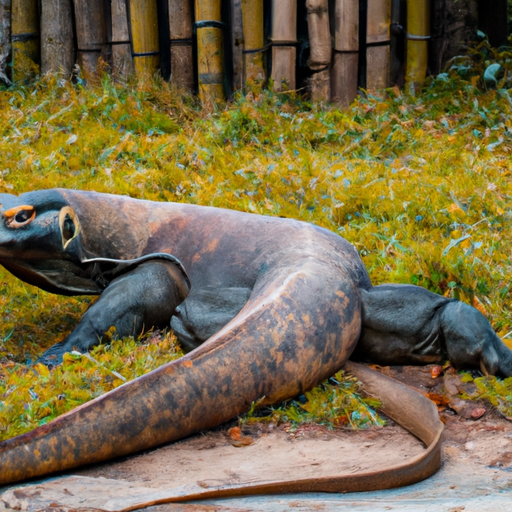 When Animals Blend in with Their Surroundings: The Marvel of Camouflage
When Animals Blend in with Their Surroundings: The Marvel of Camouflage
———————————————————-
Introduction:
—————–
Nature never ceases to amaze us with its remarkable adaptations and survival strategies. Among the most fascinating phenomena is the ability of various animals to blend seamlessly into their surroundings through the art of camouflage. This incredible adaptation allows animals to evade predators, ambush prey, and enhance their chances of survival. Throughout this detailed article, we will explore the science behind animal camouflage, the different types of camouflage strategies employed by various species, and the evolutionary advantages it offers.
The Science of Camouflage:
——————————–
Camouflage is a natural defense mechanism that enables animals to blend into their environment, effectively becoming invisible to predators or prey. It is a visually deceptive strategy that involves the use of color, pattern, and texture to match an animal’s appearance to its surroundings. This adaptation allows animals to avoid detection, making it harder for predators to locate them or for prey to recognize their presence.
Types of Camouflage:
———————–
Animals have evolved various types of camouflage to adapt to their specific environments. These can broadly be categorized into four main types:
1. Concealing Coloration:
Concealing coloration involves matching an animal’s color and pattern to its surrounding environment. This type of camouflage is commonly observed in animals inhabiting diverse habitats such as forests, deserts, and grasslands. For example, the snow leopard’s pale gray fur with black spots perfectly blends with the rocky mountains of its habitat, making it almost invisible to its prey and potential threats.
2. Disruptive Coloration:
Disruptive coloration involves breaking up an animal’s outline with contrasting patterns and colors. This makes it difficult for predators or prey to recognize the animal’s shape. The zebra’s black and white stripes are an excellent example of disruptive coloration, which confuses predators by merging their individual shapes into a visually confusing mass.
3. Mimicry:
Mimicry is a form of camouflage in which an animal imitates another organism or object in its environment. This strategy aims to deceive predators or prey by resembling something harmless or undesirable. The walking stick insect, for instance, mimics a twig, enabling it to blend effortlessly within its environment and avoid being eaten by predators.
4. Countershading:
Countershading is a form of camouflage in which an animal’s body is darker on the upper surface and lighter on the lower surface. This adaptation helps balance the animal’s overall appearance when viewed from different angles. Countershading is commonly seen in marine animals like sharks, where the darker upper surface blends with the ocean depths when viewed from above, while the lighter belly matches the bright surface when seen from below.
Evolutionary Advantages of Camouflage:
———————————————–
Camouflage provides animals with several evolutionary advantages that significantly increase their chances of survival:
1. Predation Avoidance:
Camouflaged animals can effectively hide from predators, reducing the risk of being detected and attacked. This allows them to move freely and engage in essential activities like foraging, mating, and rearing offspring without constant fear of becoming prey.
2. Enhanced Hunting Success:
Predatory animals that use camouflage can blend seamlessly into their environment, enabling them to get closer to their prey. This increases their chances of a successful ambush, as unsuspecting prey may approach within striking distance before realizing the presence of the hidden predator.
3. Efficient Foraging:
Camouflage can also aid animals in their search for food. By blending in with their surroundings, they can get closer to potential prey without triggering alarm signals. This enables them to conserve energy and minimize the effort required to capture a meal.
4. Reproductive Success:
Camouflage plays a crucial role in the reproductive success of many species. Animals that can conceal themselves during the mating season have better chances of attracting mates without alerting potential rivals or predators. Additionally, camouflaged nests or eggs provide protection for offspring from predators that rely on visual cues to locate them.
Real-Life Examples:
———————–
1. Chameleons:
Chameleons are renowned for their ability to change their skin color to match their surroundings. This remarkable adaptation allows them to blend into trees and foliage, providing excellent concealment from predators and enabling them to ambush unsuspecting prey.
2. Leaf-Tailed Geckos:
Native to Madagascar, leaf-tailed geckos possess extraordinary camouflage that allows them to mimic dead leaves. Their flattened body shape, leaf-like skin, and behavior of remaining motionless make them almost indistinguishable from real foliage, providing them with exceptional protection.
3. Arctic Hares:
Arctic hares have evolved a white fur coat during winter months, blending seamlessly with the snowy landscapes of the Arctic. This adaptation provides them with effective camouflage, making it challenging for predators such as wolves and foxes to spot them against the vast expanse of snow.
Conclusion:
—————
The phenomenon of animal camouflage is a testament to the incredible adaptations that have evolved over millions of years. Through concealing coloration, disruptive patterns, mimicry, and countershading, animals can blend effortlessly into their surroundings, offering them a significant survival advantage. From the chameleon’s remarkable color-changing ability to the intricate leaf mimicry of leaf-tailed geckos, nature continues to inspire with its mastery of deception and concealment. The study of animal camouflage not only deepens our understanding of the natural world but also serves as a reminder of the astonishing diversity of life on our planet.
